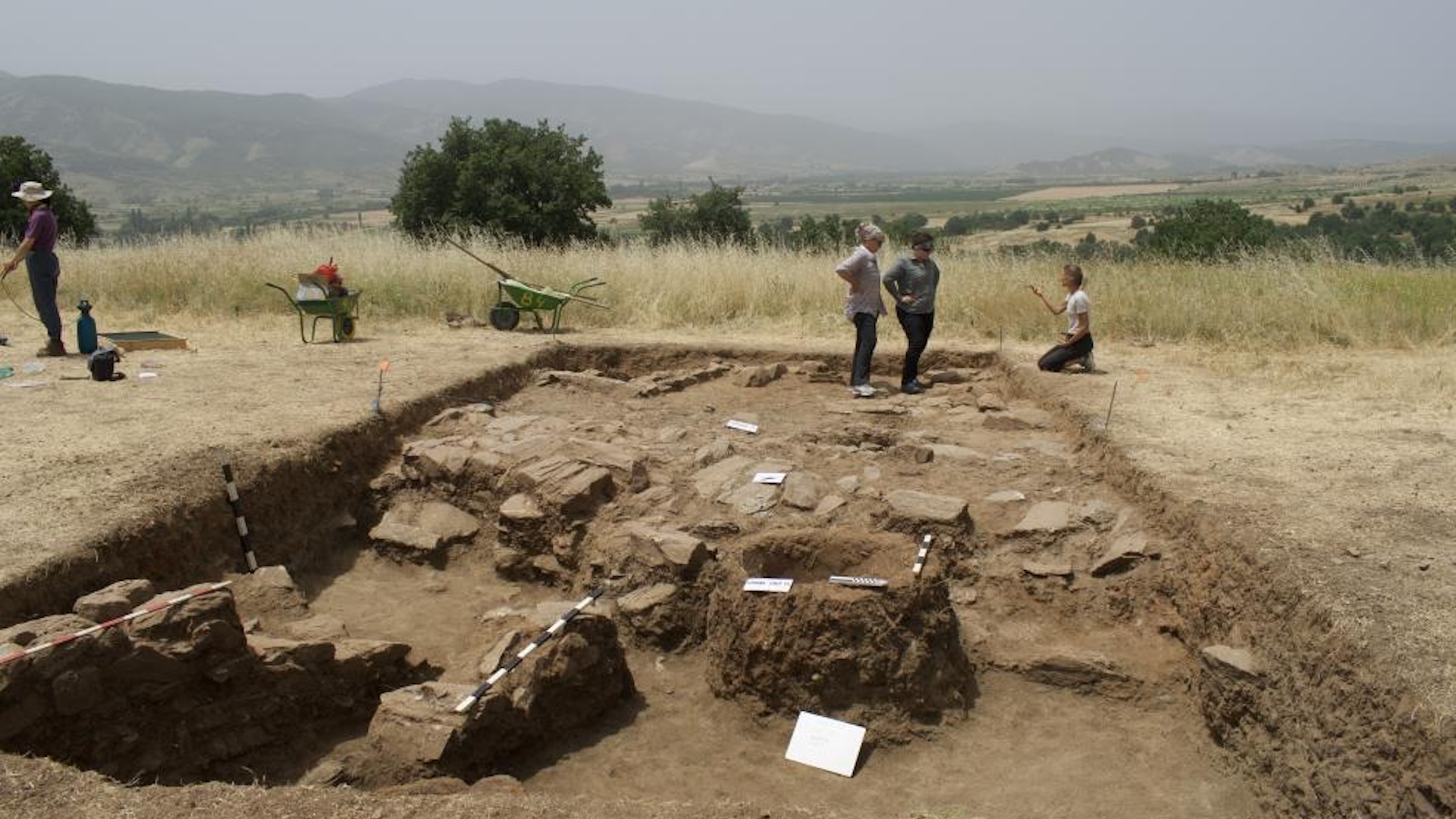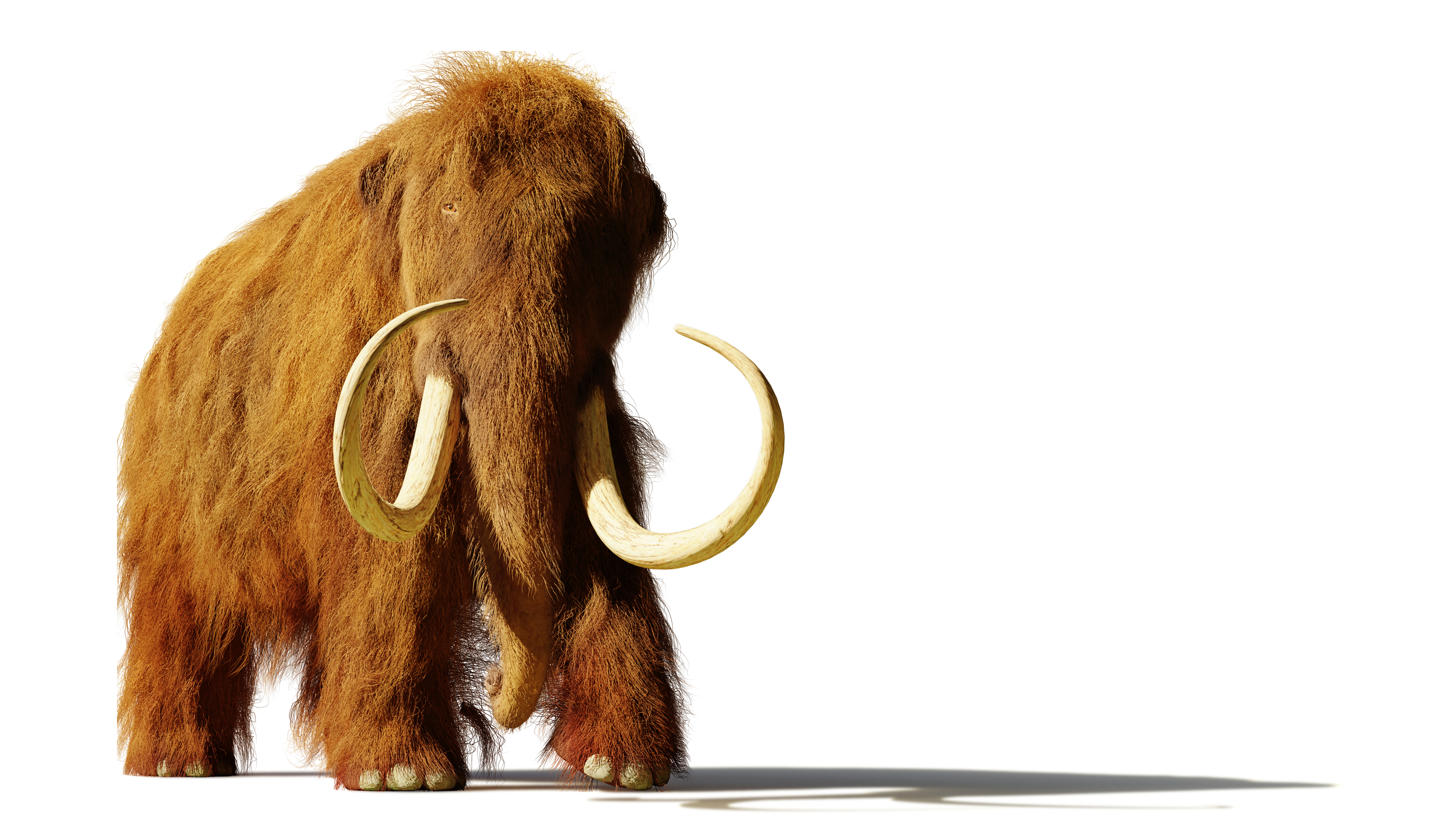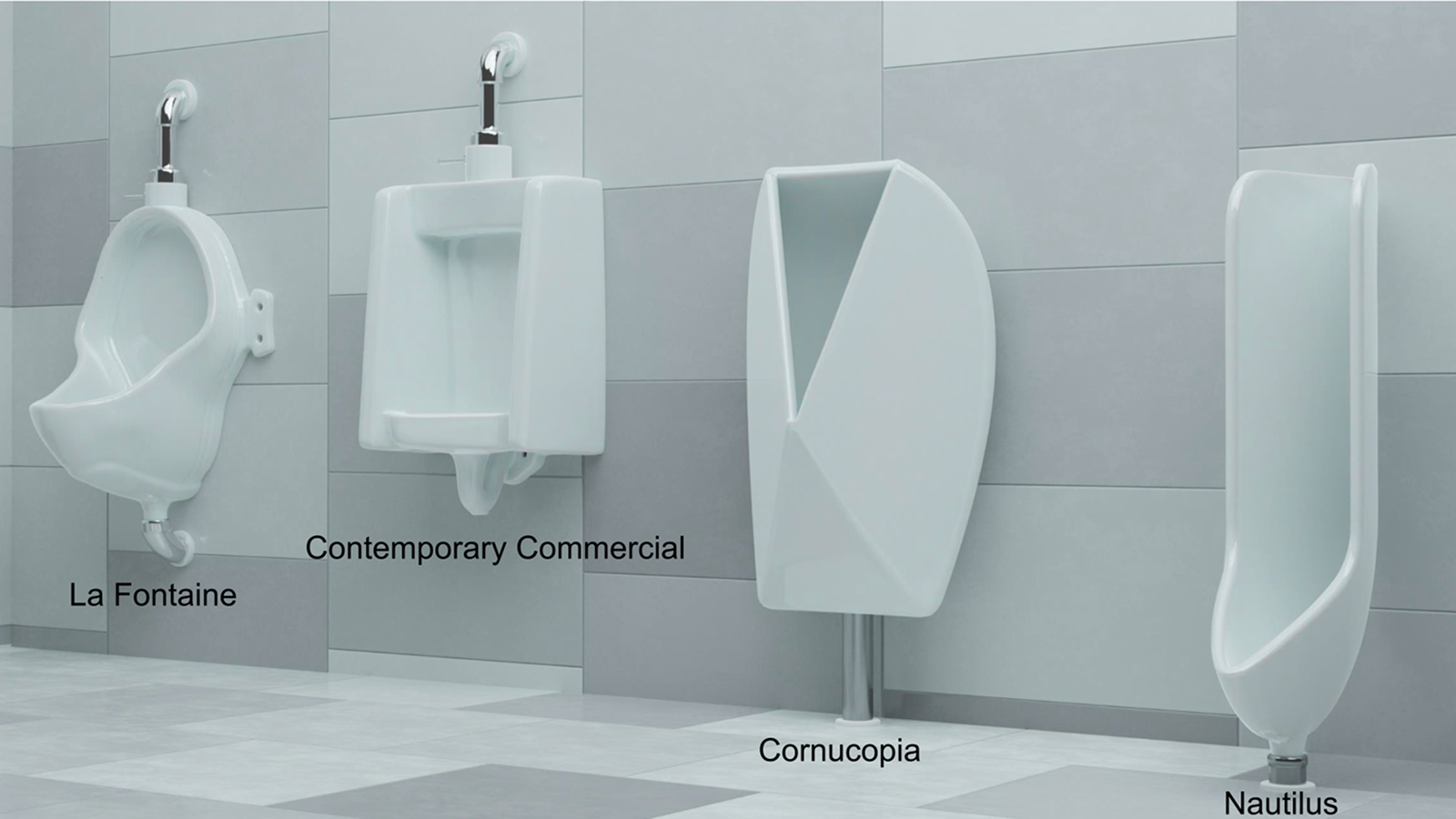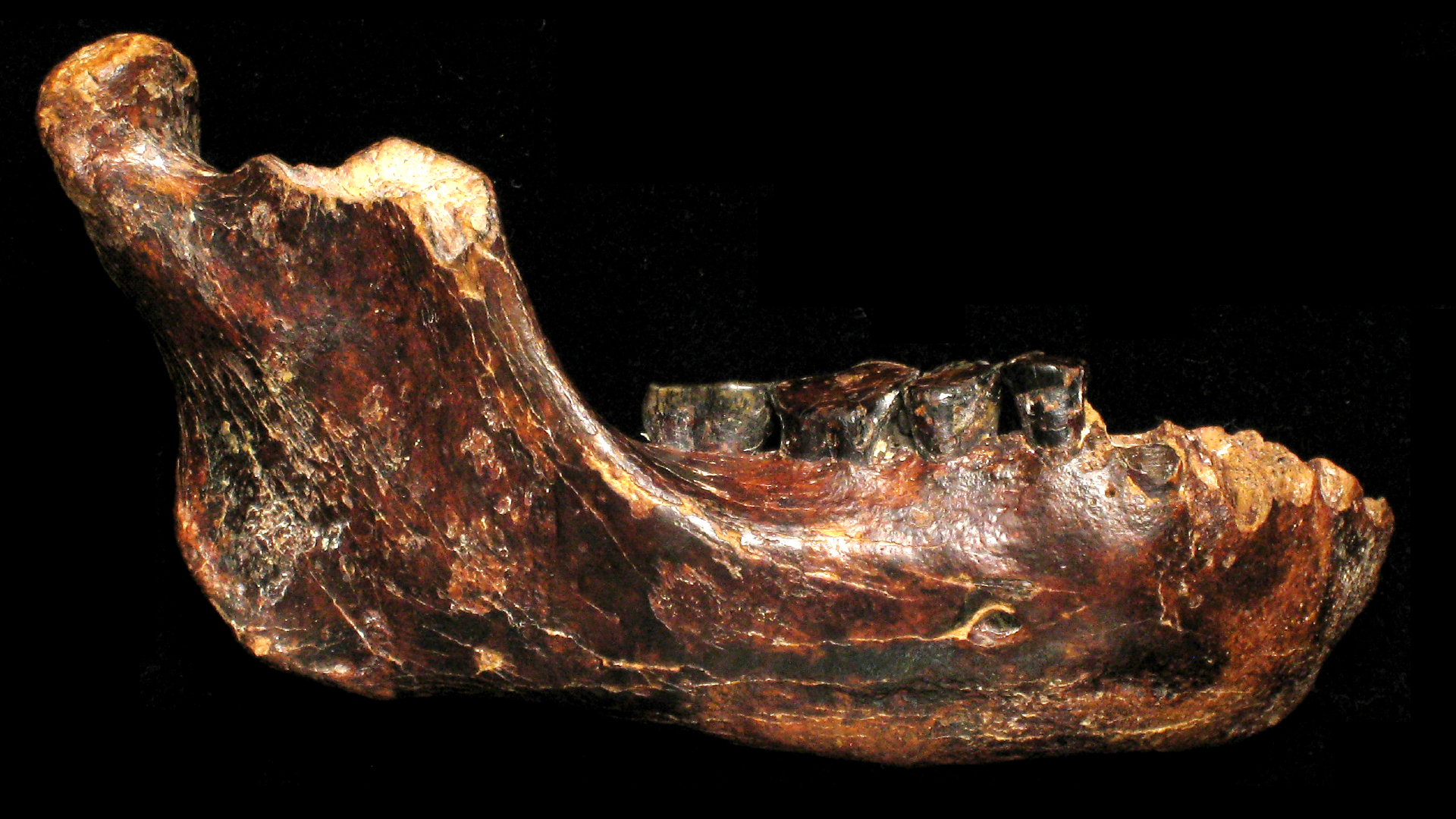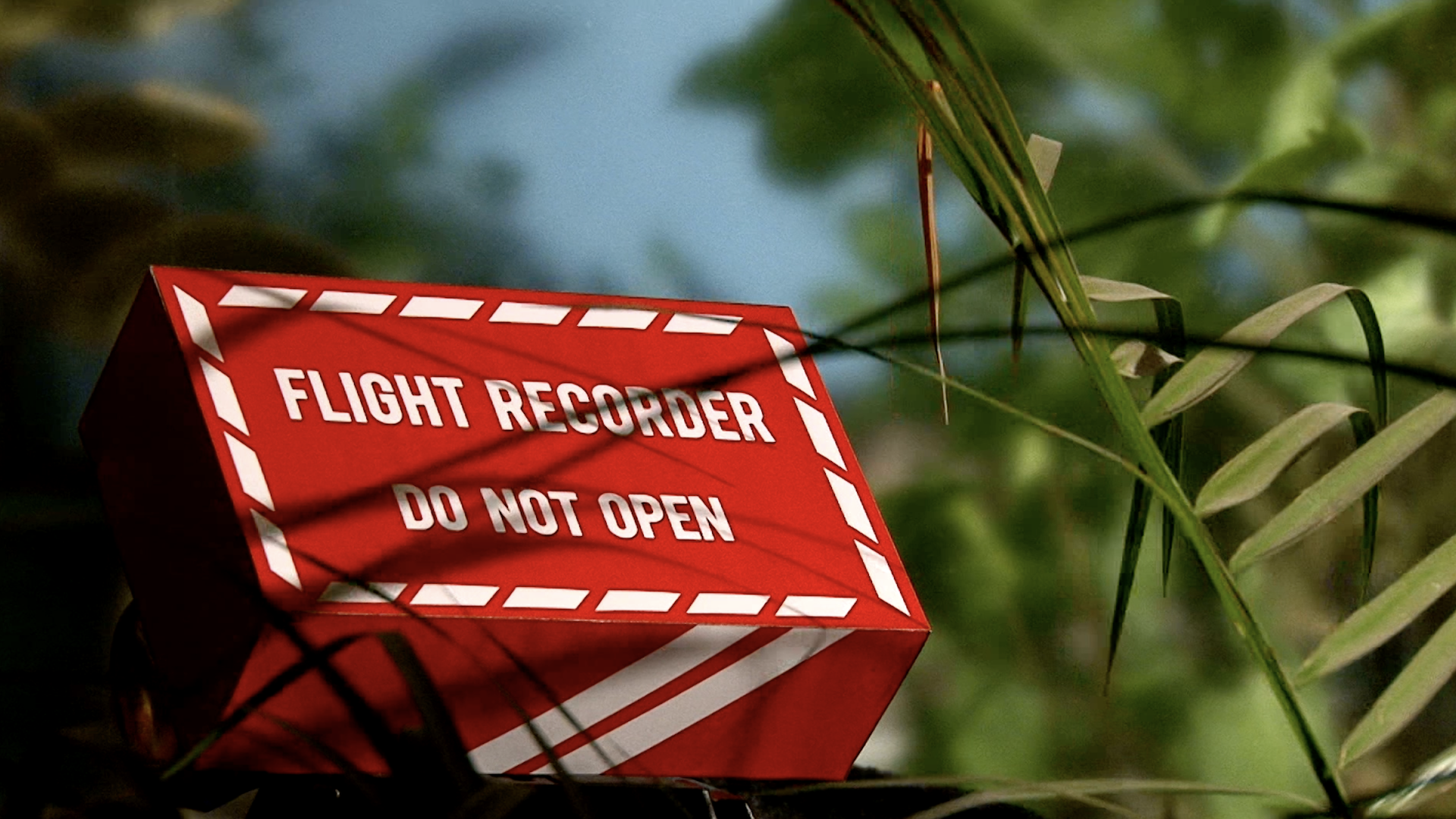Gold jewelry with leopard and tiger designs unearthed in 2,400-year-old burial in Kazakhstan
The high value of the fifth-century-B.C. artifacts found in Kazakhstan indicates that wealthy or even "royal" Sarmatians were buried there.
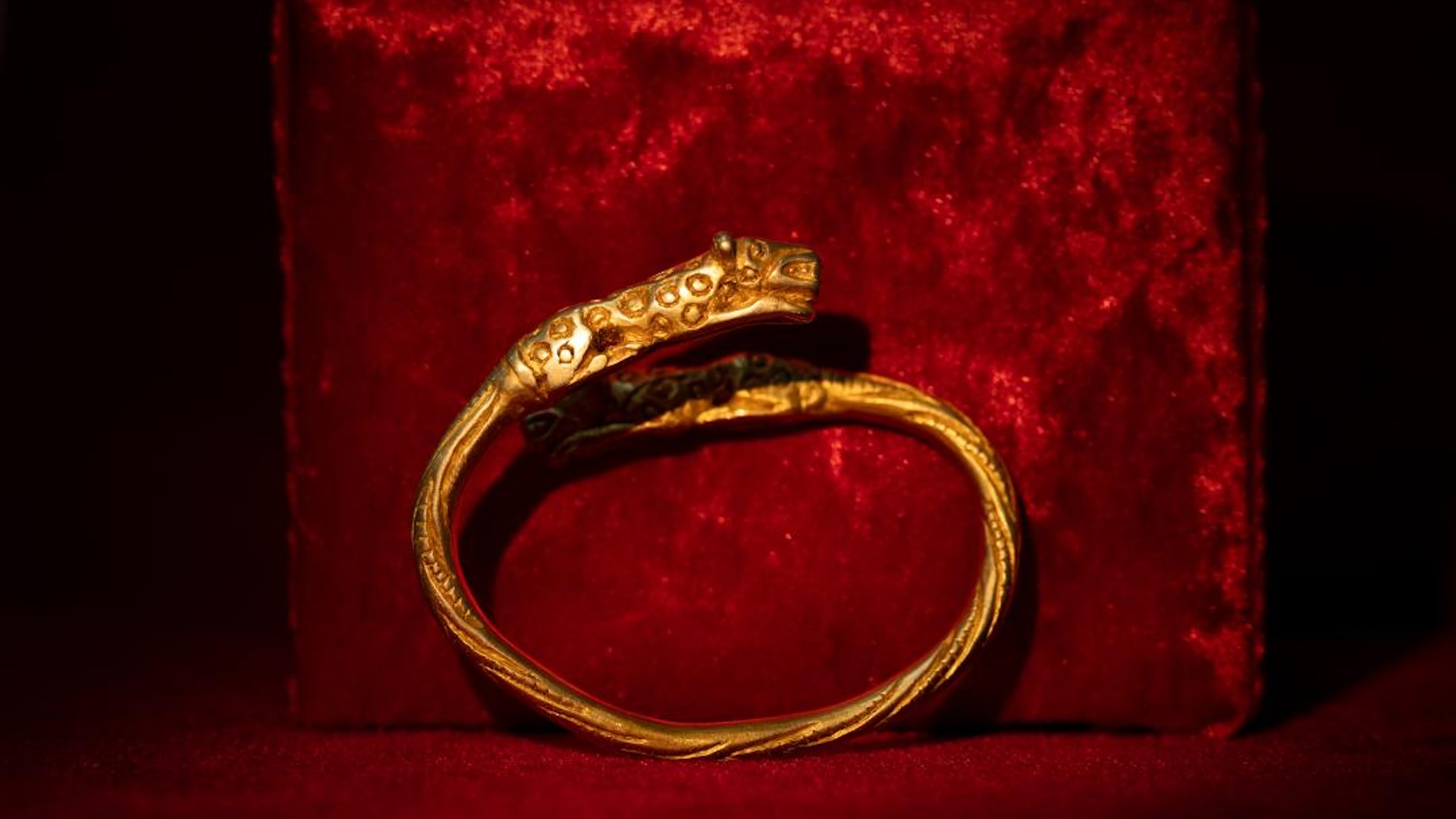
Striking gold jewelry and weapons made by Sarmatian nomads have been unearthed from three burial mounds in Kazakhstan that date to about the fifth century B.C.
The discoveries suggest the western Atyrau region, just north of the Caspian Sea, was once a Sarmatian heartland.
Archaeologist Marat Kassenov, who led the excavations, said in a translated statement that scientists had once considered Atyrau to be on the edges of the Sarmatian territories but that the new discoveries suggested it was actually near their center.
More than 1,000 artifacts have now been recovered from the region's burial mounds, and around 100 were gold ornaments and jewelry of the "animalistic" Sarmatian style. "Images of predators that inhabited the region at that time — leopards, wild boars, tigers — can be seen on the found items," Kassenov said.
The team also unearthed human remains, ceramics, two wooden bowls — a rare find because wood usually decays in burials — and two black "touchstones" with gold handles, which were probably used to reveal the purity of metals, such as gold.
Related: 2,000-year-old gold jewelry from mysterious culture discovered in Kazakhstan
Horse nomads
The nomadic Sarmatians dominated the steppe between Eastern Europe and Central Asia from about the fifth century B.C. until about the fourth century A.D. They are first mentioned in Persian writings based on ancient oral histories and may have been part of the wider Scythian culture of nomads that stretched from the Black Sea to China.
Sign up for the Live Science daily newsletter now
Get the world’s most fascinating discoveries delivered straight to your inbox.
The Sarmatians were later allied with the Goths and other Germanic tribes that settled in the lands of the Western Roman Empire after its fall in the fifth century, and at times they fought as heavy cavalry for the Byzantine Empire (also called the Eastern Roman Empire).
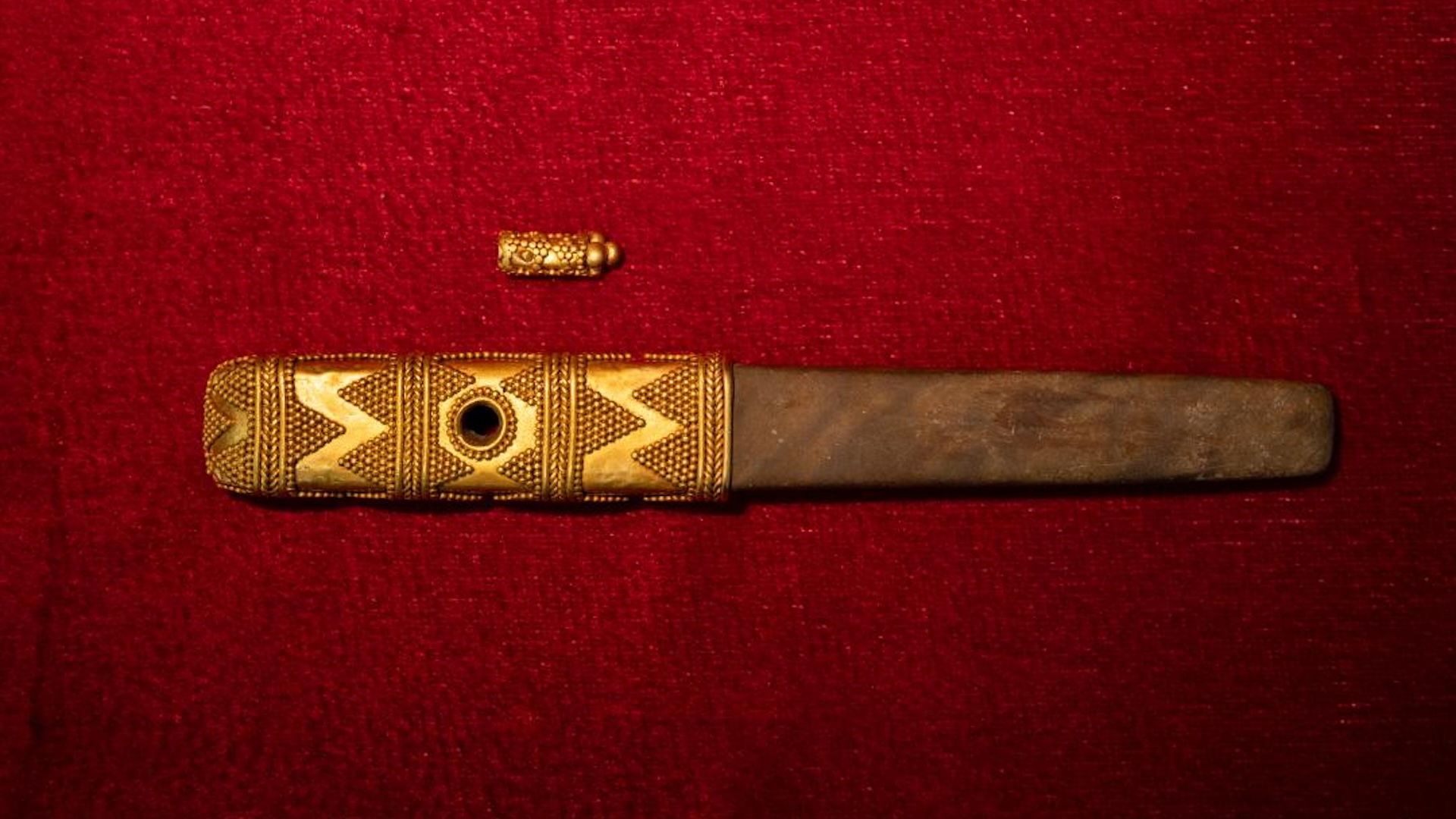
A dagger with a gold hilt and an iron blade unearthed by archaeologists from a Sarmatian burial mound in Kazakhstan's Atyrau region.
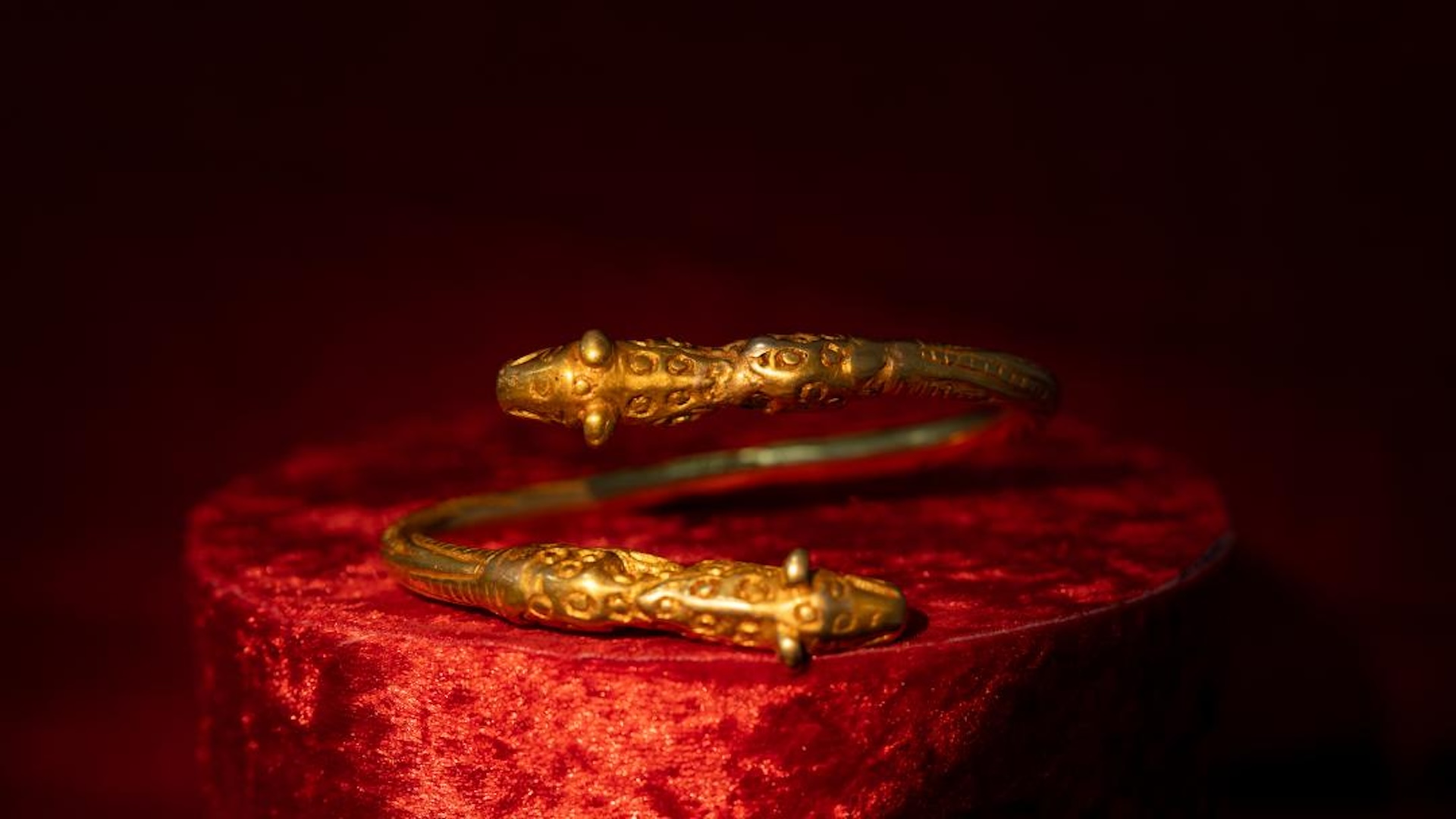
Archaeologists say that the high value of the artifacts indicates the mounds were used for the burials of wealthy Sarmatians.
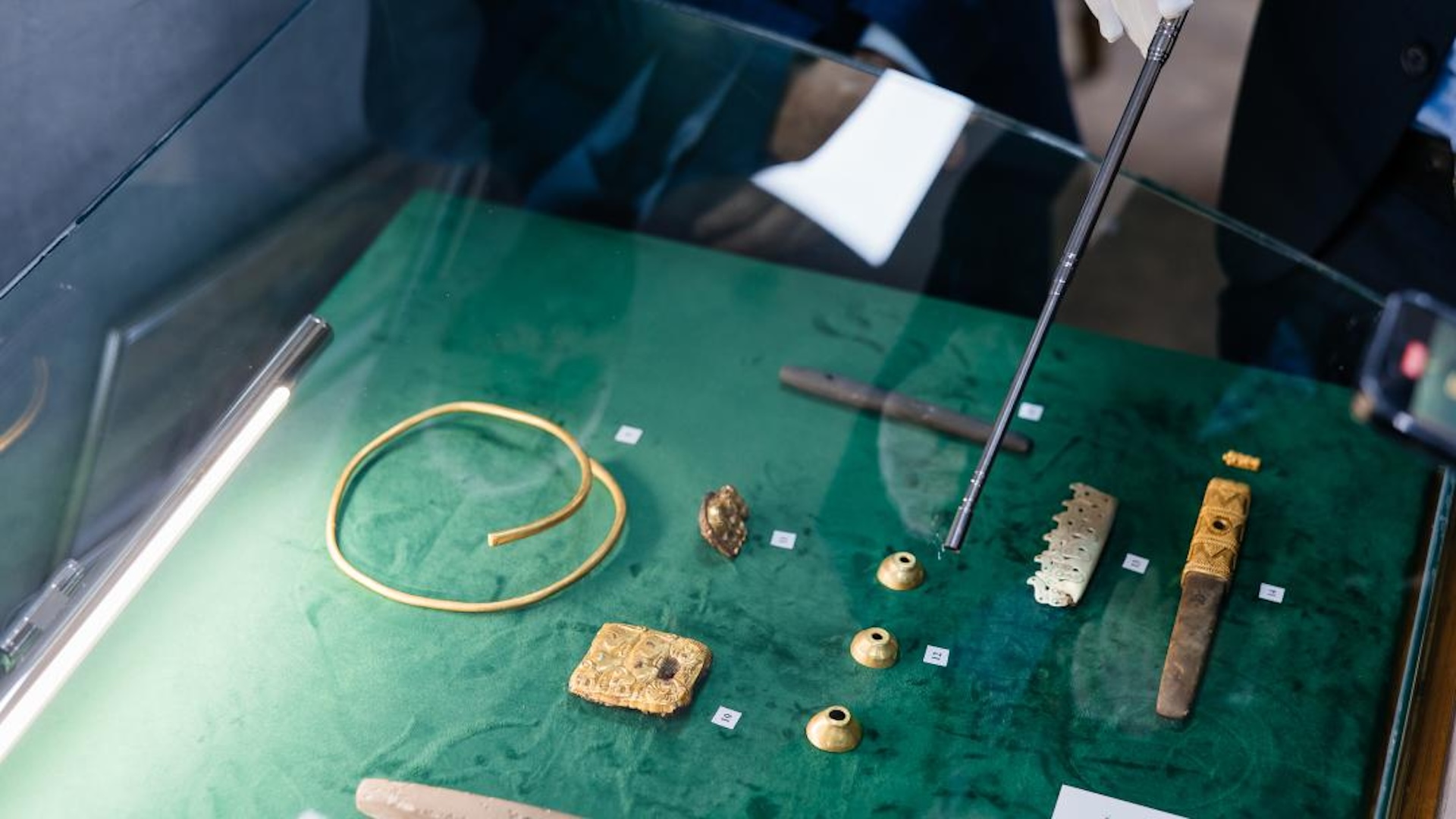
Kazakhstan archaeologists say more than 1,000 artifacts have been recovered from Sarmatian burial mounds in the Atyrau region.
Burial mounds
Many of the finds were made during excavations in 2023 and 2024 of the "Karabau-2" burial mound in the Atyrau region, according to the statement. Such burial mounds are known as "kurgans" in Eastern Europe, from a Turkish word for "mound" that was adopted in many Slavic languages.
The Karabau-2 kurgan stands about 10 feet (3 meters) high at its peak and forms a circular mound with a diameter of about 230 feet (70 m). The archaeologists determined that it had been used for at least nine individual burials, of which only two had been plundered by looters, the statement said.
The archaeologists also excavated two other burial mounds a few miles away, each with between 10 and 15 graves, which yielded iron and bronze weapons, as well as jewelry, household items, and silver "pictograms" representing a saiga antelope and a wolf. One grave also contained a gold bracelet weighing about 13 ounces (370 grams).
The high value of the artifacts suggests the kurgans had been burial sites for wealthy or even "royal" Sarmatians, the statement said.
Tom Metcalfe is a freelance journalist and regular Live Science contributor who is based in London in the United Kingdom. Tom writes mainly about science, space, archaeology, the Earth and the oceans. He has also written for the BBC, NBC News, National Geographic, Scientific American, Air & Space, and many others.
You must confirm your public display name before commenting
Please logout and then login again, you will then be prompted to enter your display name.

